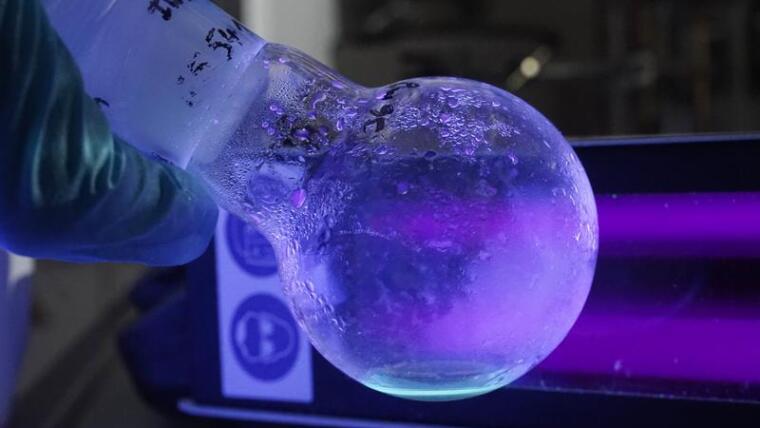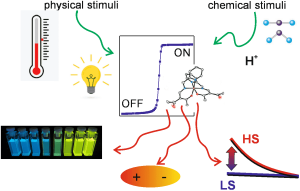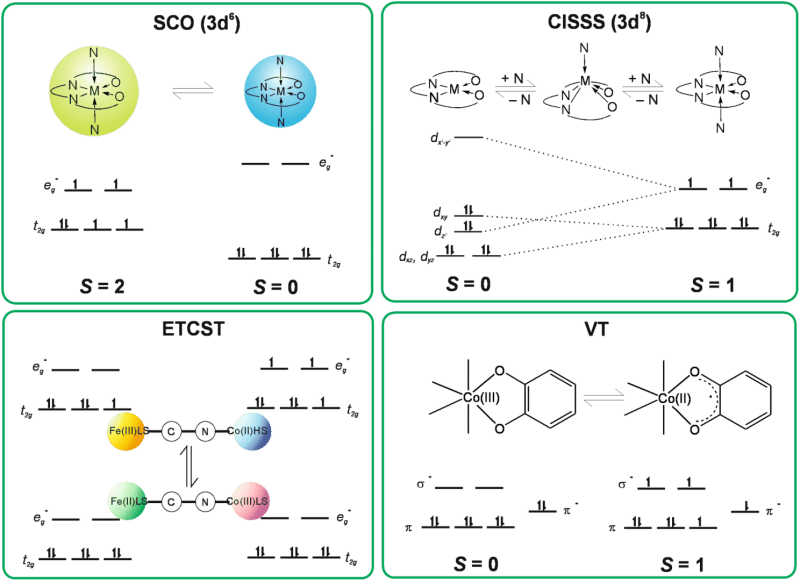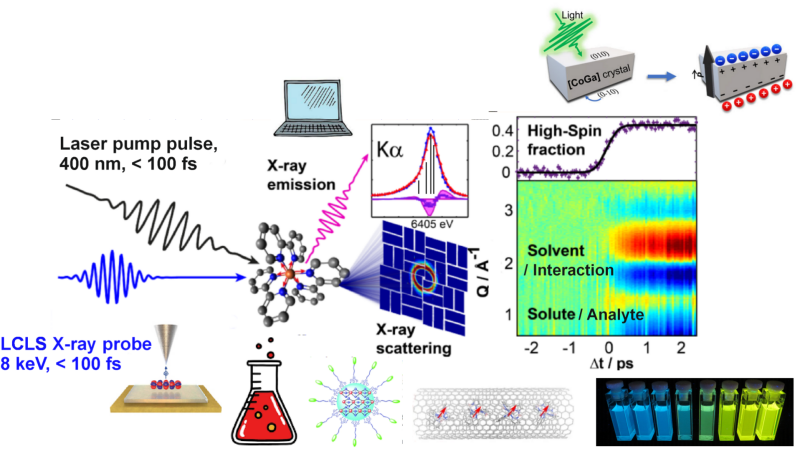
Bild1homepage_SPP2491
Image: Birgit WeberOur daily life cannot be imagined without switches: we switch on ventilation by pushing a button, the light by clapping our hands, or our phone cameras by tapping on a screen. This Priority Programme deals with the switching process in the nanoscopic world, with switches made from molecules. A molecular switch changes between two states in response to an external chemical or physical stimulus. Thereby, these molecules modify their specific properties, e.g. emission, polarisation, or magnetism. A particularly promising and versatile class of molecules for this purpose contains transition metals. Here, the spin of the electrons, a fundamental quantum property, can be paired or unpaired, resulting in two states with different total spin.
Bild2Homepage_SPP2491
Image: Birgit WeberSwitching the spin state is essential in many processes. One example is the reversible binding of oxygen in the red blood pigment haemoglobin. Here, a spin-state switch at the iron centre occurs, accompanied by structural changes important for ensuring efficient oxygen uptake and release. In technological processes, spin-state switching is equally important: in catalysis, it can alter the reactivity pathways, and in device applications, it can serve as a sensor or memory unit. While the switching process itself is of molecular origin, the phenomenon has been mostly studied in bulk. Interactions between adjacent switches lead to cooperative behaviour, which can be tuned to better control the materials' properties. While considerable progress has been made in the field, it still lacks an in-depth understanding that would allow us to predict and design systems with properties such as switchable luminescence for sensing applications or conductivity for device integration. Similarly, the interaction of spin-state switching molecules with a matrix or surfaces is insufficiently understood. This is needed for the integration of such complex molecular systems in composite materials. A path towards understanding the interaction of spin-state switches with the surroundings can be provided by recent developments in ultrafast diffraction and electronic spectroscopy methods to follow the structural and electronic changes that accompany spin-state switching, combined with the progress made in the theoretical description of such systems.
Bild3Homepage_SPP2491
Graphic: Birgit WeberThe goal of the SPP 2491 “Interactive Spin-State Switching” will be the design of molecular switches, which, triggered by physical and chemical stimuli, change their total spin states to steer processes related to the i) emission, ii) polarisation, and iii) magnetic properties in devices. Such novel molecular devices will be of prime importance for quantum sciences and technology (e.g., qubit control), for sensing applications (e.g., tumour detection), and information processing (e.g., high-density storage). To achieve this, the SPP 2491 will investigate new concepts for low-energy switching, establish new readout channels, and possibly lead to the discovery of conceptually new switching mechanisms.



